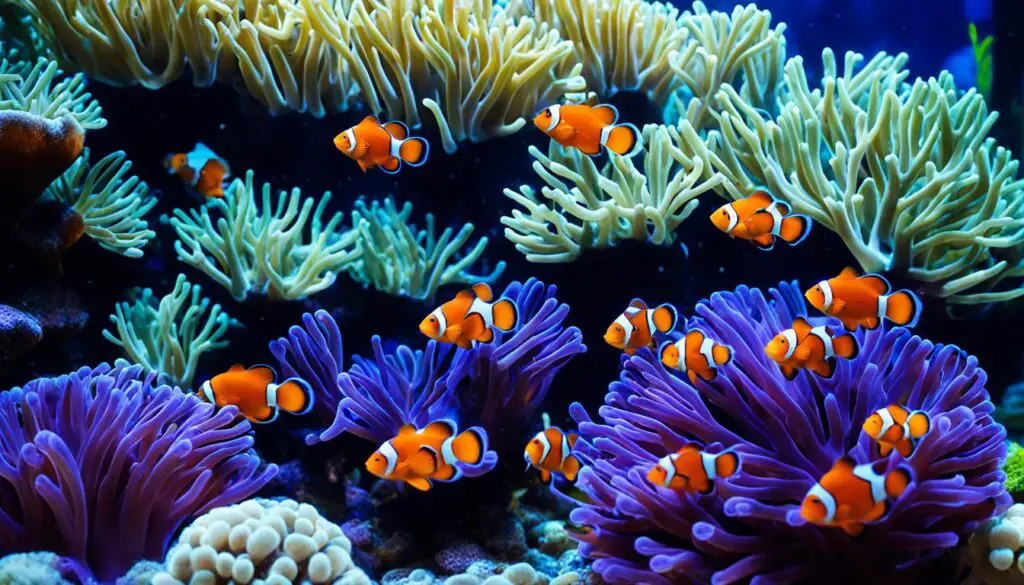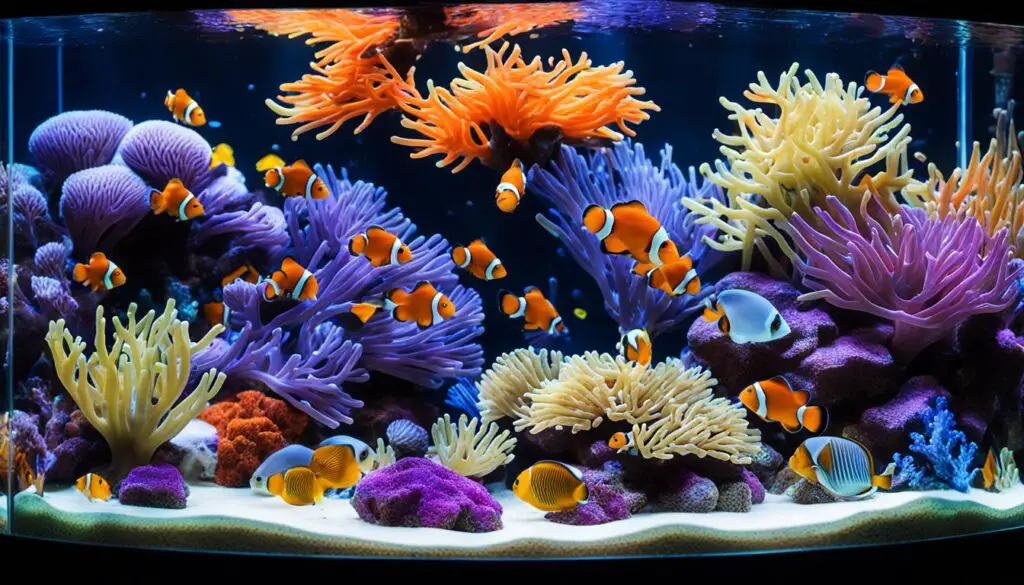Exploring Innovations in Aquarium Setups: Trends Unveiled
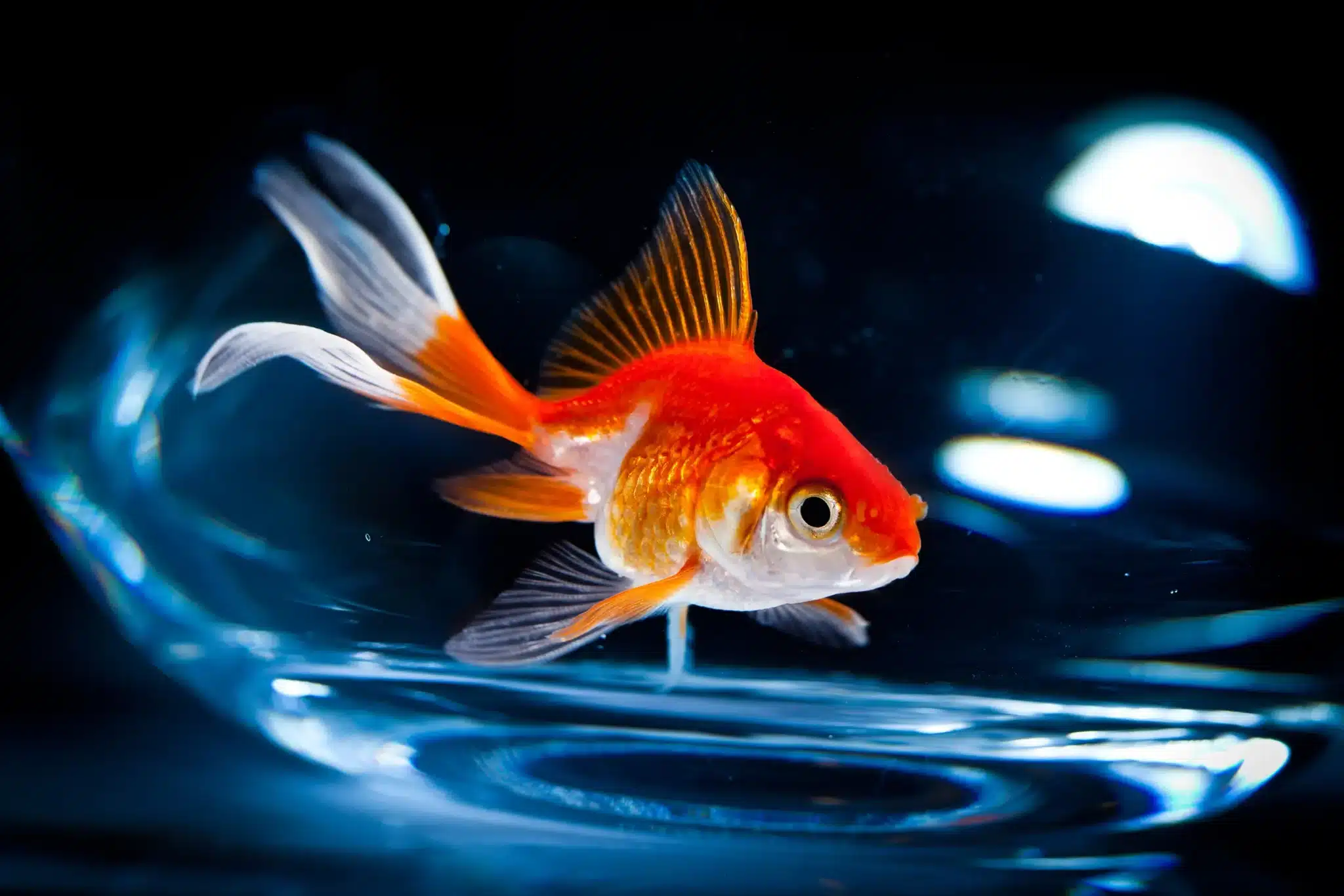
Introduction
Welcome to the fascinating world of aquarium setups, where the art of creating aquatic environments has evolved into a captivating blend of science and creativity. With the continuous advancement of technology and a growing passion for aquatic life, the realm of aquariums is witnessing a constant influx of innovative features and trends.
In this exploration, we delve into the latest developments that have taken the aquarium hobby by storm, unveiling cutting-edge advancements, and awe-inspiring innovations that redefine the way we design, maintain, and appreciate these underwater marvels.
Whether you’re an avid aquarium enthusiast or simply curious about the latest trends, join us on this journey to discover the ever-evolving landscape of aquarium setups. From smart automation to mesmerising aquascaping techniques, prepare to be enchanted by the wonders that await beneath the surface.
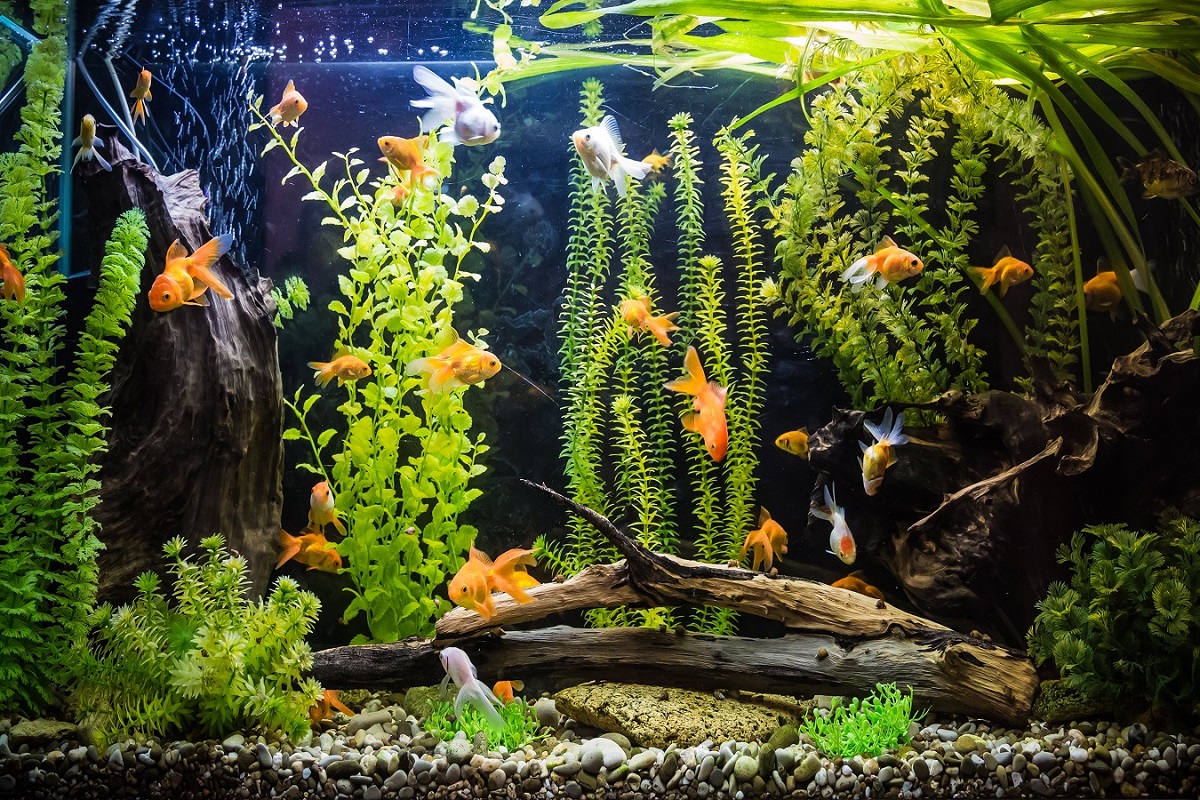
What is peracetic acid used for in aquaculture?
Results of a new study by researchers at Nofima suggest that peracetic acid can safely be used as a water disinfectant in recirculating aquaculture systems (RAS) that contain salmon parr.
Its antimicrobial properties make it an effective tool for maintaining water quality and preventing the spread of diseases in aquaculture systems. Here are some key uses of peracetic acid in aquaculture:
Water Disinfection:
Peracetic acid is employed to disinfect water in aquaculture facilities, including fish farms, hatcheries, and recirculating aquaculture systems (RAS). It helps to eliminate harmful bacteria, viruses, fungi, and other pathogens that can affect the health of aquatic organisms.
Biofilm Control:
Biofilms, which are slimy accumulations of microorganisms that adhere to surfaces, can develop in aquaculture systems and negatively impact water quality and fish health. Peracetic acid is effective in controlling and removing these biofilms, thus promoting a cleaner environment for the aquatic species.
Disease Prevention and Treatment:
Peracetic acid can be used as a preventive measure to reduce the risk of disease outbreaks in aquaculture setups. When properly applied, it helps to eliminate or reduce the pathogen load in the water, minimising the chances of infections among the aquatic animals.
RAS Maintenance:
In recirculating aquaculture systems, where water is continuously reused, maintaining water quality is crucial. Peracetic acid aids in controlling ammonia, nitrite, and nitrate levels, ensuring that the water remains suitable for the fish or other aquatic organisms.
Egg and Larval Disinfection:
Peracetic acid is sometimes used to disinfect fish eggs and larvae during the hatching process. By treating the eggs, it helps to prevent the transmission of diseases from the parent fish to the offspring.
Disinfection of Equipment and Tanks:
Before introducing new fish or aquatic organisms to a tank or system, it is essential to disinfect the equipment and tanks to prevent the introduction of potential pathogens. Peracetic acid is used for cleaning and disinfecting these components effectively.
Environmental Safety:
One advantage of peracetic acid is that it decomposes into harmless by-products, namely water, oxygen, and acetic acid. This makes it an environmentally friendly choice for aquaculture when used responsibly and in appropriate concentrations.
How can I make my aquarium more interesting?
Decorate your tank with rocks to make the landscape at the bottom of the tank more interesting. Fish will also often hide behind rocks. Rocks have a variety of shapes and colors, so you can look for rocks that you think add to your overall theme. Choose rocks that speak to your sense of style.
Aquascaping:
Create an attractive aquascape by arranging rocks, driftwood, and live plants in a visually pleasing manner. Use different shapes, sizes, and textures to design natural-looking landscapes that mimic underwater habitats like rivers, lakes, or coral reefs.
LED Lighting:
Invest in high-quality LED lighting systems that allow you to customize the colors and intensity. Proper lighting not only showcases your aquascape but can also promote healthy plant growth and bring out the vibrant colors of fish and other inhabitants.
Live Plants:
Incorporate live aquatic plants into your aquarium. They not only add beauty but also serve as hiding spots and food sources for certain fish species. Live plants contribute to a more balanced ecosystem by helping to maintain water quality.
Diverse Fish Species:
Consider adding a variety of fish species that are compatible with each other. Different species exhibit unique behaviors and colors, adding liveliness and diversity to your tank.
Decorative Elements:
Introduce themed decorations such as statues, ruins, or pirate ships, depending on your preference. These elements can create a fun and intriguing theme for your aquarium.
Backgrounds:
Choose a suitable background for your tank that complements the overall design. Backgrounds can give depth to the aquarium and create a more immersive viewing experience.
Aquarium Furniture:
Place small, appropriately sized ornaments like miniature castles or sunken treasures to add interest and give the fish additional places to explore.
Fish Behavior Enrichment:
Provide toys or floating objects that encourage fish to interact and explore. For example, you can use a floating mirror to stimulate territorial behavior in certain species.
Seasonal Themes:
Consider changing the aquarium’s decorations or setup according to seasons or special occasions. For instance, you can decorate the tank with ornaments related to holidays or festive events.
Maintenance and Cleanliness:
Regularly maintain the aquarium by cleaning the glass, trimming plants, and removing debris. A well-maintained tank not only looks better but also provides a healthier environment for the aquatic inhabitants.
Interactive Feeding:
Add some interactivity to feeding time by using floating food rings or feeding stations. This can encourage natural feeding behaviors and make feeding sessions more engaging.
What makes fish happy in a tank?
To help keep your fish happy and healthy, make sure your water, filters, temperature, and lighting are set up correctly. When the tank environment isn’t right, oxygen levels can decline, or harmful byproducts like ammonia might rise. This can lead to sick fish.
Creating a happy and healthy environment for fish in a tank involves considering their natural behaviours, needs, and overall well-being. Here are some key factors that contribute to fish happiness in an aquarium:
Appropriate Tank Size: Providing enough space for the fish to swim and explore is crucial. Overcrowding can lead to stress, aggression, and poor water quality. Research the adult size of each fish species and choose a tank that accommodates their needs.
Water Quality: Maintaining excellent water quality is essential for fish health and happiness. Regularly test the water for parameters such as ammonia, nitrite, nitrate, and pH, and perform water changes as needed to keep the environment clean and stable.
Filtration and Aeration: An efficient filtration system helps remove impurities and maintains oxygen levels in the water. Adequate aeration ensures a sufficient oxygen supply for the fish, promoting their overall well-being.
Temperature and Lighting: Keep the aquarium temperature stable and within the optimal range for the fish species you have. Proper lighting with a suitable photoperiod (duration of light) helps regulate their natural day-night cycle.
Compatibility: Choose fish species that are compatible with each other in terms of behavior, size, and water requirements. Avoid aggressive or territorial species that may cause stress or harm to other tankmates.
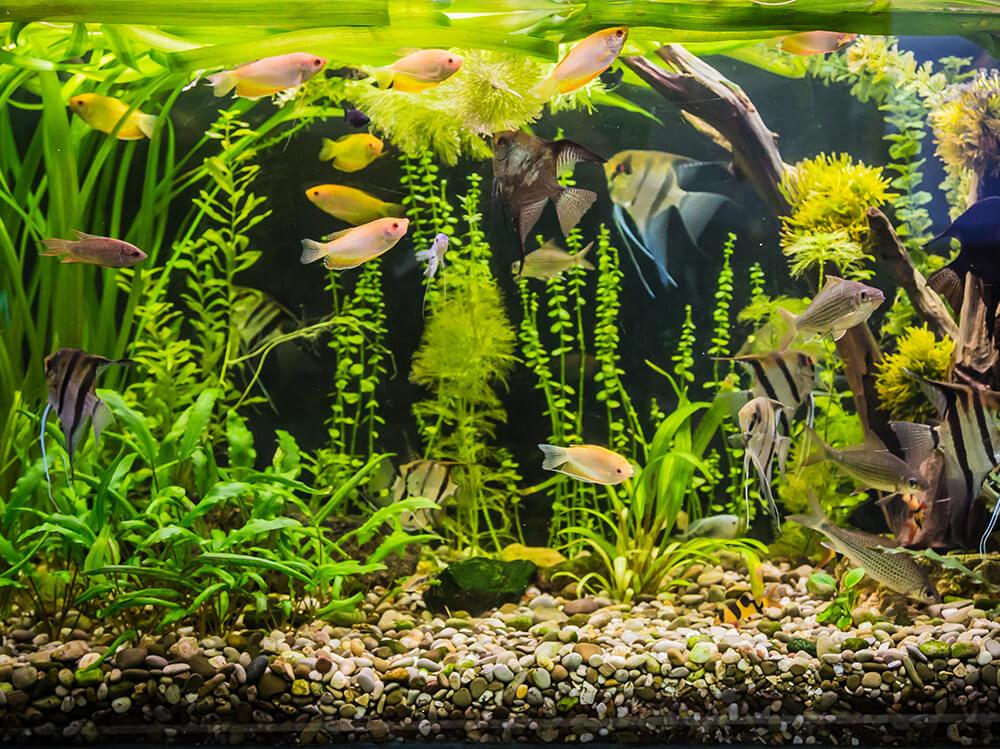
What do fish love the most?
Overall, most fish need some meat in their diet, which they get from insects, worms, or smaller fish. Meanwhile, larger, carnivorous fish will primarily subsist on other fish, small mammals, or birds. Generally speaking, the larger the fish, the larger the prey it will target and consume.
Fish, like any other living beings, have specific needs and preferences that contribute to their overall well-being and happiness. Understanding what fish love the most is essential for creating a thriving aquarium environment that allows these aquatic creatures to flourish. While each fish species may have unique preferences, there are some common factors that fish universally appreciate:
Clean and Stable Water:
Fish love clean and well-maintained water. Pristine water quality is crucial for their health and reduces stress. Regular water changes, proper filtration, and monitoring of water parameters ensure a stable and conducive aquatic environment.
Adequate Space:
Providing enough space for fish to swim and explore is vital. Overcrowding can lead to stress, aggressive behavior, and hinder their natural movements. Selecting an appropriately sized tank based on the adult size of the fish species is essential.
Appropriate Temperature:
Maintaining the right water temperature within the species’ preferred range is essential for fish comfort. Sudden temperature fluctuations can be stressful, so it’s crucial to use a reliable heater to keep the water stable.
Hiding Places:
Fish appreciate hiding spots like caves, plants, and driftwood. These hiding places offer security and protection, allowing them to retreat when they feel stressed or threatened.
Compatibility:
Keeping compatible tankmates is crucial for fish happiness. Peaceful interactions among fish reduce stress and create a harmonious community.
Proper Nutrition:
A balanced diet that meets the specific dietary needs of each fish species is essential. Offering a variety of foods, including high-quality flakes, pellets, live, or frozen foods, ensures optimal nutrition and encourages natural feeding behaviors.
Aquascaping:
Fish love a well-designed aquarium. Aquascaping with live plants, rocks, and decorations that mimic their natural habitats enhances the visual appeal of the tank and provides a sense of familiarity to the fish.
Routine and Consistency:
Establishing a regular routine for feeding and lighting schedules reduces stress and provides a sense of stability for the fish.
Social Interaction:
Some fish are social and thrive in the company of their own species. Maintaining a small group of compatible fish can offer social interaction and alleviate loneliness.
Enrichment:
Providing enrichment activities like toys, floating objects, or live food encourages natural behaviors such as hunting and exploring. Enrichment stimulates their mental and physical health.
What colour is lucky for aquarium?
Aquarius: There is a possibility of buying a new property. You will receive support from friends. Sudden financial gains will occur. Lucky color: Blue.
Aquariums should be visually appealing and harmonious for fish and viewers. Colors can create different feelings and moods, therefore aquarium colors are a question of personal preference and aesthetics.
Here are some considerations when selecting colors for your aquarium:
Natural Theme: Many aquarists prefer natural and earthy colours, such as greens, browns, and blues, to create an environment that mimics the underwater world. These colours can be calming and soothing.
Vibrant Colours: Some people opt for vibrant colours like red, orange, and yellow to create a bold and eye-catching display. These colours can add a sense of liveliness and energy to the aquarium.
Contrast: Using contrasting colours can create visual interest and make certain elements, like fish or decorations, stand out. For example, a brightly coloured fish against a dark background can be visually striking.
Fish Coloration: Consider the colours of the fish you plan to keep. If you have colourful fish, you may want to choose a backdrop or substrate that complements their colours.
Lighting Effects: The type and color of lighting you use can also influence the appearance of your aquarium. LED lighting, for example, allows you to customise the colour spectrum, which can enhance the colors of your fish and decorations.
Personal Preference: Ultimately, the color that is “lucky” for your aquarium is the one that brings you joy and satisfaction. Choose colors that you find visually appealing and that match your style and taste.
What is smart automation in aquarium setups?
Smart automation refers to the integration of technology and sensors to control various aspects of the aquarium environment. This can include automated feeding systems, lighting schedules, water parameter monitoring, and even remote control via smartphone apps.
Here are some key aspects of smart automation in aquarium setups:
Monitoring and Control: Smart automation systems include sensors and probes that continuously monitor important water parameters such as temperature, pH level, ammonia, nitrite, nitrate, and salinity. This data is relayed to a central controller or a smartphone app, allowing the aquarist to remotely view and manage the aquarium’s conditions in real-time.
Automated Equipment Control: Smart aquarium controllers can be programmed to manage various aquarium equipment automatically. This includes turning lights on and off at specific times, adjusting water circulation pumps, managing water heaters and chillers, and controlling filtration systems.
Feeding Automation: Automated fish feeders are designed to dispense precise amounts of food at scheduled intervals. This ensures regular and consistent feeding even when the aquarist is away, preventing overfeeding or underfeeding of the fish.
Water Change Automation: Some advanced aquarium setups have automated water change systems that allow for automated water replacement and water level maintenance. This feature helps maintain stable water conditions and reduces the manual effort required for routine water changes.
Integration with Mobile Devices: Many smart aquarium systems can be connected to mobile devices through dedicated apps. This allows the aquarist to monitor and control the aquarium remotely, providing peace of mind and convenience, especially when travelling.
How do LED lighting systems enhance aquarium setups?
LED lighting has revolutionised the aquarium hobby by offering energy-efficient lighting with a wide range of customizable colours. It not only provides optimal lighting conditions for aquatic plants and corals but also creates stunning visual effects, enhancing the overall aesthetics of the aquarium.
LED lighting systems have revolutionised the world of aquarium setups, offering a multitude of benefits that go beyond traditional lighting options. These advanced lighting systems have become a popular choice among aquarists due to their versatility, energy efficiency, and ability to enhance the overall aesthetics and functionality of aquariums. Here’s how LED lighting systems enhance aquarium setups:
Energy Efficiency: LED (Light Emitting Diode) lights are highly energy-efficient compared to traditional fluorescent or incandescent lights. They consume significantly less electricity, resulting in lower energy bills and reduced environmental impact.
Customizable Spectrum: LED lighting systems allow for precise control over the color spectrum. Aquarists can adjust the intensity and color temperature of the light to mimic natural lighting conditions or create specific lighting effects that enhance the appearance of the aquarium.
Optimal Plant Growth: For aquariums with live plants, LED lights provide the necessary light wavelengths (such as blue and red) for photosynthesis, promoting healthy and vibrant plant growth. With the right spectrum, aquarists can achieve lush planted aquascapes.
Vibrant Fish Colours: LED lighting brings out the natural colors of fish, enhancing their visual appeal. Many fish species display more vivid and vibrant colors under LED lighting, making the aquarium a stunning display of aquatic beauty.
Longevity: LED bulbs have a significantly longer lifespan than traditional lighting options. They can last up to 50,000 hours or more, reducing the frequency of bulb replacements and associated maintenance costs.
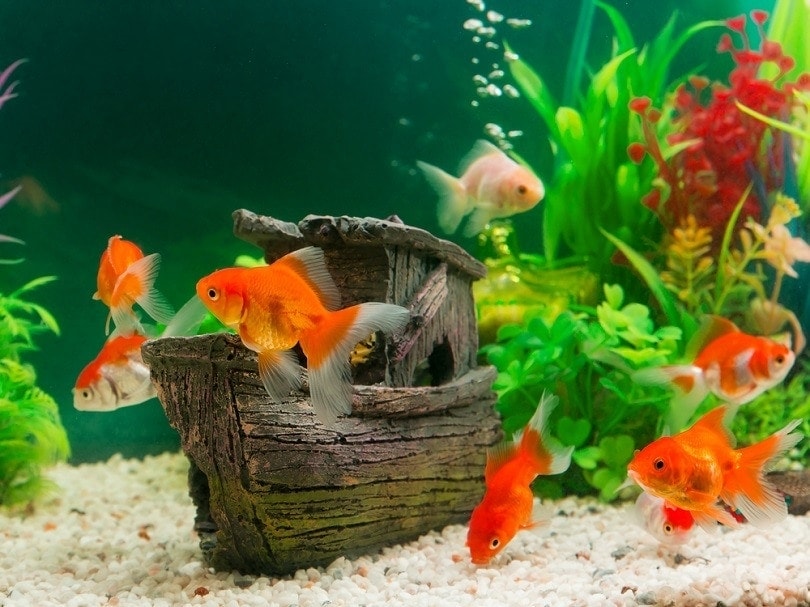
Conclusion
The world of aquarium setups has experienced a remarkable transformation, driven by the latest trending features and innovations. Advancements in technology, coupled with a growing passion for aquatic life, have ushered in a new era of creativity and convenience for aquarium enthusiasts. From smart automation systems that streamline maintenance and monitoring to LED lighting with customizable spectrums that bring out the true beauty of aquatic inhabitants, these innovations have redefined the art of aquarium keeping.
Aquascaping has evolved into a mesmerizing blend of art and science, with enthusiasts designing intricate underwater landscapes that mimic natural habitats and showcase the beauty of live plants and hardscape elements. These visually captivating setups not only please the eye but also provide a more enriched and natural environment for the fish and other aquatic creatures.
Additionally, eco-friendly practices have gained prominence, promoting sustainable choices in equipment and livestock selection. A focus on environmental conservation and responsible aquaculture has become an integral part of the modern aquarium hobby, creating a positive impact on aquatic ecosystems and marine life preservation.


